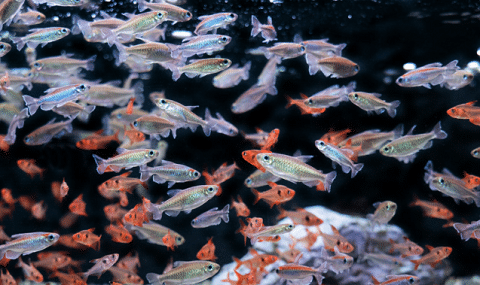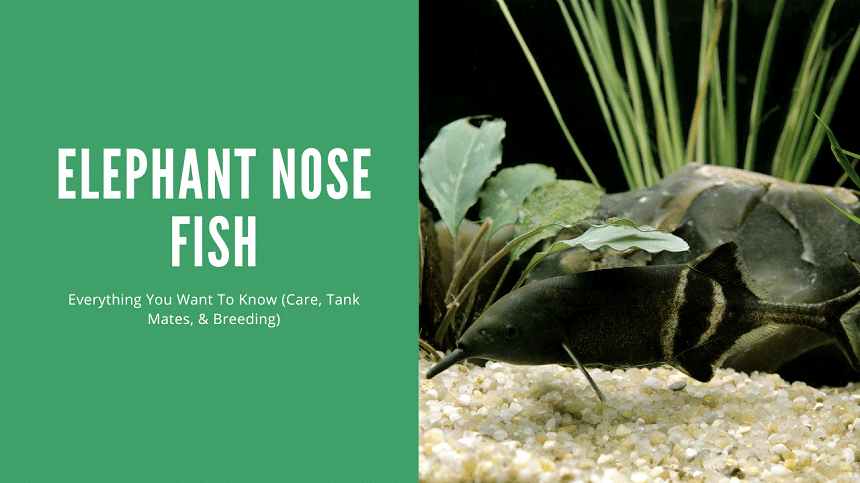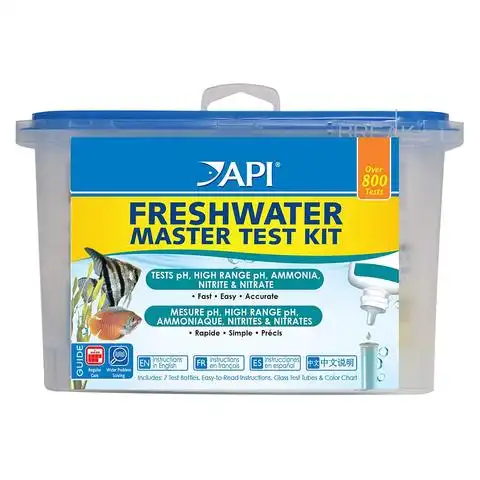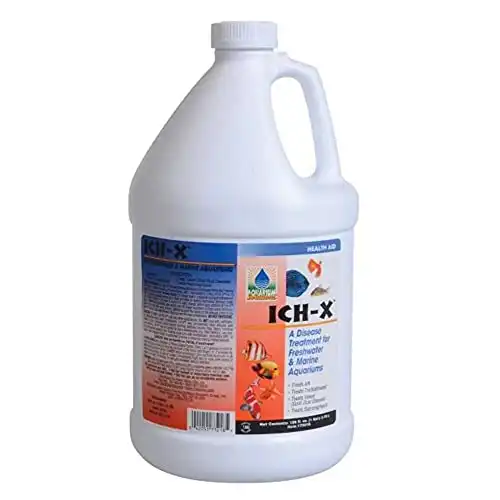Thank you for visiting! By the way… any links on this page that lead to products on Amazon and other stores/partners are affiliate links Aquarium Store Depot earns a commission if you make a purchase.
Let’s journey into the world of Elephant Nose Fish and learn all there is to know about their care. These freshwater fish are unique in appearance, with a distinctive nose that sets them apart from other varieties. They are electrical fish with some unique behaviors. However, they are one of the trickiest fish to keep in the hobby.
We will go over everything you need in order to keep this fish successful in your fish tank. Let’s get started!
Key Takeaways
- Native to Africa, Elephant Nose Fish thrive in low-visibility environments and can live up to 10 years.
- Creating the perfect habitat for them requires a minimum tank size of 50 gallons with dimmed lighting, hiding spots & compatible tank mates.
- Breeding Elephant Nose Fish is difficult but possible. Be aware of their sensitivity to noise/vibrations & medications when caring for them!
Species Overview
| Scientific Name | Gnathonemus petersii |
| Common Names | Elephant Nose Fish, Long-nosed Elephant Fish, Peters Elephant Nose Fish, Peters’s Elephant Nose Fish, Peter’s Elephant |
| Family | Mormyridae |
| Origin | Central African Republic – West and Central Africa (Including Chari River & Ogun River) |
| Diet | Omnivorous |
| Care Difficulty | Difficult |
| Activity | Noctornal |
| Life Expectancy | 6 – 10 years |
| Temperament | Peaceful, but can be territorial |
| Tank Level | Bottom Dweller |
| Minimum Tank Size | 55 gallons (208 liters) |
| Temperature Range | 73-82°F (23-28°C) |
| Water Hardness | 5-12 dKH (degrees of Carbonate Hardness) |
| pH Range | 6.0 to 7.5 |
| Filtration/Water Flow | Moderate to high |
| Water Type | Freshwater |
| Breeding | Egg scatterer |
| Difficulty to Breed | Very difficult |
| Compatibility | Community Tanks with other similarly sized fish |
| OK, for Planted Tanks? | Yes |
Introduction
The Elephant Nose Fish, scientifically known as Gnathonemus petersii, has a natural habitat in some of Africa’s rivers. These include the Niger River and two others (Chari and Ogun Rivers) that feature low visibility due to dense plant life like branches, logs, and roots. They typically swim near the middle or bottom layers of these murky waters where they have plenty of food sources available to them with their good adaptation skills for such an environment.
These incredible aquatic creatures rely on instincts developed specifically for navigating these complex ecosystems while showcasing remarkable traits in order to thrive as Elephant Nose Fish in such situations.
Adaptations For Low Visibility Environments
Elephant Nose Fish are remarkable creatures that possess an impressive adaptation known as electrolocation. This helps them to maneuver and hunt underwater even when visibility is low due to murky water or darkness (they have poor vision too). Their schnauzenorgan1 (their long nose) plays a key part in this process. It allows the fish to sense objects around it using electrical impulses, allowing for an effortless navigation of its aquatic environment.
Lifespan And Adult Size
The Elephant Nose Fish is an intriguing freshwater fish species, reaching adult sizes of up to 9 inches. If given a suitable home aquarium and kept in optimal water quality conditions, it’s believed they could live anywhere between 6-10 years, making them one of the longer living freshwater fish species out there.
It takes special care to make sure that these nose fish have all they need for their long lives. With just a few simple steps, owners can ensure many happy and healthy years together!
Appearance

One of the most recognizable features of Elephant Nose Fish is their distinct and attractive shape, which usually consists of a dark brown or gray shade with white markings. The fish’s impressive schnauzenorgan (its trunk-like nose) stands out as its most striking feature. This drooping organ provides them with electrolocation capabilities. They boast large pectoral fins along with two dorsal fins where the first one has an obvious spine in front. Their head displays a pointed thinness that renders it unforgettable when looking at these fish up close.
Elephant Nose Fish Care Guide
Caring for Elephant Nose Fish needs a deep understanding of their special demands and atmosphere. It is vital to make sure that they have the suitable tank size, habitat construction, and water parameters in order for them to remain healthy and happy. What makes this fish difficult to keep in the combination of the following factors:
- They are territorial
- High sensitivity to water conditions
- There isn’t a lot of information about care online for them
While they are social, they can be very territorial. To stay fit and content, it is recommended that you feed your fish high-protein live or frozen meals.
In this section we will give advice on taking care of an elephant nose so you can build the optimal home environment for your aquatic companion. We’ll make sure all aspects regarding the specific necessities are met – from appropriate tank dimensions, constructing natural habitats within tanks right down to providing proper water conditions – doing everything correctly offers assurance in having a thriving population of these amazing creatures!
Tank Size
For the optimal well being of your Elephant Nose Fish, it is essential to ensure they have a spacious and comfortable environment. To provide them with adequate space for activity and searching for food, a 50-gallon tank or larger should be provided.
By choosing bigger tanks comes with more added benefits. Additional plants can easily fit in, which ultimately leads to decreased levels of stress among these fish as well as contributes to their overall healthiness over extended periods of time.
Habitant Construction
When setting up a tank for your Elephant Nose Fish, it’s essential to ensure there are plenty of hiding places. Including pipes, pots and caves along with the right plants and decorations, can create an ideal habitat for them. Popular choices that make great additions include:
- Salvinia
- Java Moss
- Water Wisteria
- Duckweed
- Anubias
- Java Ferns
A soft substrate such as sand or gravel should also be added in order to protect their delicate schnauzenorgan from any possible injury while dimmed lighting helps give off more natural conditions for the fish themselves.
Tannins also help dim the aquarium. You can introduce tannins with driftwood or Indian Almond leaves.
These leaves can be added to your aquarium to help promote a natural habitat for bettas, shrimp, and other soft-water loving fish. Betta breeders can use these leaves to help encourage breeding behavior.
Sensitivities To Noise And Equipment
The Elephant Nose Fish is attuned to water movement through its lateral line sensory system, thus making it essential for the tank in which they are held to be away from loud appliances and noise. Having plenty of hiding spots like a hollow log or more vegetation can provide them with added security as they navigate their environment.
To ensure minimal sound and vibration levels, filter choice must also take into account. Ideally, a canister filter is best for them. This accomplishes a few problems your electric species may come across. Canister filters are external and won’t cause vibrations in the tank. They are also able to house external water heaters with with filters like the OASE where you can please the heater in the filter or via an inline heater.
The Elephant nose fish requires minimal electrical current and vibrations in the tank. Putting a heater out of the display tank makes their sensory system calm. You should also stay away from powerheads and wavemakers in the tank, as the vibration will cause disruptions to them.
Water Parameters
It is essential to regulate the water parameters in order to ensure that an Elephant Nose Fish is healthy and happy. To do so, maintain a neutral pH level, keep temperatures between 78-82°F and hardness levels within 5-15 dKH. For other parameters, check them out below:
While in the wild, the Elephant fish is known for being very hardy, they are highly sensitive. Outside of the parameters listed, they require low TDS water and a high oxygen environment. Utilizing accurate testing kits regularly can help monitor these environmental conditions, which will consequently benefit your fish’s well being overall. Make sure to also do water changes based on the parameters you want to maintain in your fish tank.
Best Aquarium Test Kit For Freshwater
With all the essentials and accurate testing, this test kit is the best one to get you started
Feeding
For proper nutrition and growth, the diet for your Elephant Nose Fish must contain lots of protein. Live or frozen foods like bloodworms, brine shrimp, earthworms, mosquito larve, tubifex worms, and larvae are important elements in their meals.
Feeding Frequency And Tips
Your elephant nose fish needs to eat regularly. Providing them with small amounts throughout the day works best rather than giving one big meal per day that can cloud up the water quickly from uneaten food. Monitoring what they have consumed will allow you to make any necessary adjustments so there isn’t an excess amount in each serving size given by yourself!
For a healthy and contented Elephant Nose Fish, it is suggested to give them a bit of food three times each day. These fish can even be taught to eat from your fingers! Leave some snacks at the bottom of the tank allows their natural scavenging instincts to come into play as they search through the substrate looking for something good to munch on.
Behavior And Social Preferences
In order to ensure a healthy and well-balanced environment for Elephant Nose Fish, it is essential to understand their behavior and social preferences. Speaking, they remain peaceful when in solitary confinement. If housed with other fish of the same species within the same tank, then aggression may arise as they are known for being very territorial.
Peaceful Solitude Vs. Aggression
Elephant Nose Fish tend to prefer their own space and don’t usually take kindly to sharing it with other fish. But when confined in overcrowded conditions or lacking hiding spots, these creatures may become aggressive due to competition for food.
To avoid such scenarios, ensure that the tank they inhabit is adequately sized so as not to have too many nose fishes coexisting there at once, also provide appropriate places of refuge from which your aquatic friends can hide if needed, and finally, be mindful of regular feeding times-this will help keep disputes over sustenance under control!
Activity Patterns
These unique Elephant Nose Fish, using their weak electric field produced by special muscle tissue, can discover prey and mates easily as they explore the substrate of an aquarium for food at night. Such behavior makes them interesting additions to any tank. They also use these electrical signals to be warned of potential predators during their search for food at night.
Tank Mates

It is very important to consider what species are suitable tankmates for an Elephant Nose Fish when setting up their aquatic environment. To ensure a healthy and peaceful aquarium, it’s critical that the other fish abide by the same water parameters as these special creatures.
Recommended Tank Mates
The Elephant Nose Fish typically cohabitates harmoniously with larger tetras, catfish, loaches, , and gouramis. Here are some specific good tank mates;
For this reason, it is important to avoid placing any small fish or other aggressive species in the same tank as them since they may be scared away or become prey for the elephant nose fish. Cory Catfish also make a good choice.
Tank Mates to Avoid
When setting up an aquarium for your Elephant Nose Fish, choose tankmates that are not aggressive and will not cause the fish unnecessary stress. Here are a few bad examples:
- Nano fish that can fit in their mouths
- Large aggressive cichlids
- Other fish that look like them like the Black Ghost Knife Fish, or Baby Whale
While a fish like the Black Ghost seems like a good option, other electric species will create issues as the interference will stress the fish out and cause aggression.
The Challenges Of Breeding
Breeding Elephant Nose Fish in aquariums presents some tough challenges due to the difficulty of gender identification and their unique behavior when confined. Despite various attempts, no successful evidence has been found for breeding these fish at home, making it a complicated task even for experienced aquarists.
In this section, we will delve into the problems associated with attempting to breed Elephant Nose Fish as well as factors that can make reproducing them difficult.
Gender Identification
When attempting to breed Elephant Nose Fish, the most reliable method of determining their gender is not physical, but through dissection – a process which unfortunately proves unfeasible for aquarists. There are no clear signs or features that can be used as an identifier. Thus, nose fish remain difficult to sex with without a more thorough investigation.
Breeding Attempts And Outcomes
Breeding Elephant Nose Fish is an intricate endeavor that requires commitment, dedication and a suitable set up. To get the results you want, it’s necessary to prepare a big tank with hiding places, have water temperatures between 78-82°F and maintain pH levels of 6.5-7.5, respectively – even under these perfect conditions. This type of fish presents many challenges due to its complex behavior patterns making gender recognition quite difficult.
That being said, it’s highly unlikely you will be able to breed these fish on your own. There are captive bred Elephant Fish for sale, but they are breeding via commercial means, which are not available to the average aquarist.
Common Health Issues And Treatment Options
The Elephant Fish is particularly sensitive to the majority of medications, which makes preventing health problems a priority. This section will go over typical illnesses that these fish face including Ich and fin rot as well as discuss what treatments are suitable for them.
It’s very important to remember their sensitivity when giving medication so it can be used judiciously whenever needed.
Disease Prevention
Keeping the water quality and tank conditions optimal is essential for preserving a healthy Elephant Nose Fish population. Regular testing, guaranteeing that all of the parameters such as temperature, pH balance and other elements in their habitat remain within an acceptable range, is key to shielding them from common diseases like Ich or fin rot – anything it takes to keep your fish disease-free.
Sensitivity To Medications
Due to the vulnerability of the Elephant Nose Fish, caution must be used when administering medications. Whenever possible, avoiding giving them medication should be your first priority, and utmost care should be taken not to expose these fish to any hazardous toxins.
In cases where bacterial or fungal infections are present, a combination of Ich X and Erythromycin is recommended. They are considered safe for use with nose fish. Both being successful in treating such conditions.
Ich-X is the best all around medication when it comes to treating Ich
Frequently Asked Questions
Are elephant nose fish hard to keep?
Yes, they are one of the more difficult fish to keep in the freshwater hobby. They are not for beginner aquarists. Having an elephant nose fish as a pet can be incredibly rewarding, but you must put in the effort to maintain their environment. It is essential for good health that water parameters and temperature are kept within suitable ranges.
If you’re up for it, caring for your own nose fish could be quite fulfilling! Take into account all of its specific tank needs. This includes keeping certain elements stable, which will help guarantee a happy life-long companion.
How smart are elephant nose fish?
The remarkable intellect of elephant nose fish is a truly amazing thing. Utilizing their electro-sensing organs, these fishes can learn and remember objects in the environment they inhabit. Despite not having an outer cortex, the ability to recognize unfamiliar things or differentiate previously encountered ones holds true for them! This extraordinary intellectual aptitude is really impressive.
Elephant noses have become popular pet fish due to this intelligence. Their ability to detect with such accuracy has captivated many owners over time – people drawn by both its uniqueness as well as how it functions.
How many elephant nose fish should I keep?
If you want to have a group of Elephant Nose Fish, it is suggested that at least five should be kept. Alternately, keeping them individually may also work as they are known for being hostile in pairs.
This type of fish needs special consideration when deciding how many individuals will occupy an aquarium environment because their aggression towards each other could create problems. Having more than 5 nose fishes can ensure the safety and coexistence among all specimens.
How big do elephant nose fish grow?
The elephantnose fish can reach an impressive size of up to 14 inches (35 cm)! On average, though, they usually stay around 9 inches (23 cm) – still a substantial size.
How many elephant nose fish should be kept together?
Elephant Nose Fish should be kept in an environment with at least five of their own kind, as they tend to become quarrelsome when there are less than that. Tank mates who won’t battle for food should also accompany these fish. This will create a pleasant setting and ensure the Elephant Noses remain happy.
Closing Thoughts
This thorough guide offers helpful information on looking after Elephant Nose Fish. To provide them with the best possible environment, diet and suitable tankmates, it is essential to have an in-depth knowledge of their specific needs as well as recognizing the unique features and adaptations they possess. Dedication and patience will result in healthy, content fish for many years if you understand how to care properly for these captivating creatures!
- About the Author
- Latest Posts
I’m thrilled that you found Aquarium Store Depot! Here you’ll find information on fish, aquariums, and all things aquatics related. I’m a hobbyist (being doing this since I was 11) and here to help other hobbyists thrive with their aquariums! I adhere to a high quality Editorial Process and Review products with real life field usage and practical analysis.








